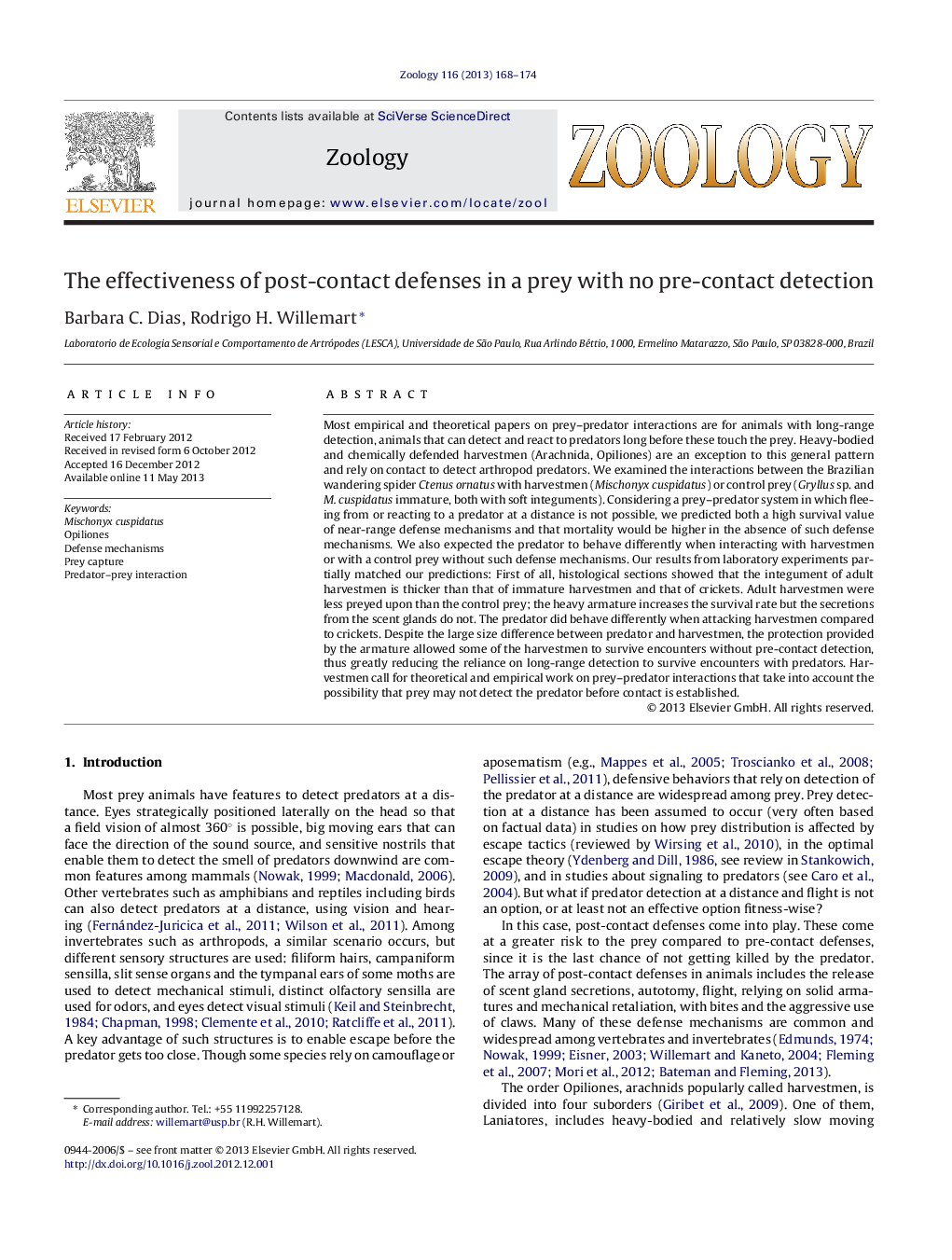| Article ID | Journal | Published Year | Pages | File Type |
|---|---|---|---|---|
| 2791146 | Zoology | 2013 | 7 Pages |
Most empirical and theoretical papers on prey–predator interactions are for animals with long-range detection, animals that can detect and react to predators long before these touch the prey. Heavy-bodied and chemically defended harvestmen (Arachnida, Opiliones) are an exception to this general pattern and rely on contact to detect arthropod predators. We examined the interactions between the Brazilian wandering spider Ctenus ornatus with harvestmen (Mischonyx cuspidatus) or control prey (Gryllus sp. and M. cuspidatus immature, both with soft integuments). Considering a prey–predator system in which fleeing from or reacting to a predator at a distance is not possible, we predicted both a high survival value of near-range defense mechanisms and that mortality would be higher in the absence of such defense mechanisms. We also expected the predator to behave differently when interacting with harvestmen or with a control prey without such defense mechanisms. Our results from laboratory experiments partially matched our predictions: First of all, histological sections showed that the integument of adult harvestmen is thicker than that of immature harvestmen and that of crickets. Adult harvestmen were less preyed upon than the control prey; the heavy armature increases the survival rate but the secretions from the scent glands do not. The predator did behave differently when attacking harvestmen compared to crickets. Despite the large size difference between predator and harvestmen, the protection provided by the armature allowed some of the harvestmen to survive encounters without pre-contact detection, thus greatly reducing the reliance on long-range detection to survive encounters with predators. Harvestmen call for theoretical and empirical work on prey–predator interactions that take into account the possibility that prey may not detect the predator before contact is established.
